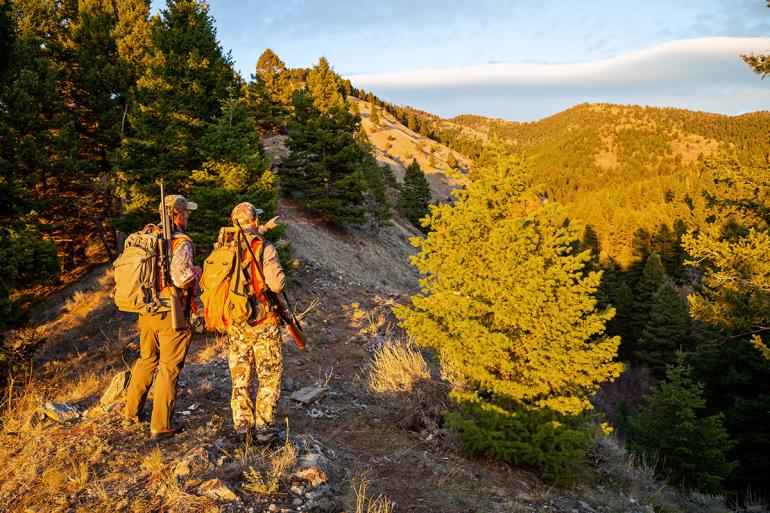Hunt Local
It’s time to put Montana hunters first.
Show us a resident hunter who doesn't think there are too many out-of-state hunters in Montana.
We’ll wait.
Truth is, this sentiment isn’t just from anecdotal observations from packed trailheads and crowded public lands. According to Montana Fish, Wildlife & Parks (FWP), 29 percent of the total hunters in Montana last year don’t even live here. That’s almost one in three.
Furthermore, the number of non-resident hunters has jumped 80 percent in the last decade alone, surging from 39,621 in 2012 to 71,302 in 2022. And it’s not just antlered-deer and elk hunters. The influx in pressure is from a steady climb in antlerless-deer and cow-elk hunters, plus increases in just about every other non-resident license opportunity offered.
For example, from 2018 to 2022, so just five years, the number of non-resident waterfowl hunters is up 29 percent, and upland bird hunters from out of state have spiked 34 percent; the number of non-resident elk B hunters has risen 23 percent, with deer B hunters with unfamiliar license plates up 20 percent.
In the spring, non-resident turkey and bear hunters in Montana become roughly twice as common in just five years, with turkey hunters climbing 58 percent, and black bear hunters from out of state up 47 percent. With states like Washington and California losing their spring bear hunting opportunities, this isn’t surprising.
Add to this the second elephant in the room: we’re losing access. The number of acres enrolled in Block Management has been declining since 2010; we’ve lost access to roughly 1.5 million private acres over that timeframe. "No Trespassing" signs are everywhere while more and more private lands are leased up for exclusive hunting.
So more non-resident hunters plus fewer places to hunt. It’s a real predicament. We all see it.
While Montana BHA continues to focus on the access and quality habitat side, we’re also spearheading a solution on the license side, or at least a way to stop it from getting worse.
Senate Bill 525, being introduced by Sen. Pat Flowers (D-Belgrade), called the "Montana Hunters First" bill, seeks to find a reasonable and sustainable balance between resident and non-resident hunters.
The bill would cap non-resident hunting licenses across the board. All of them. We currently do this for deer and elk A tags—but bears, turkeys, waterfowl, upland, and many deer B tags and elk B tags are unlimited for non-residents. FWP and the state's Fish and Wildlife Commission would be directed to set those caps by 2024 and involve the public in that process.
Additionally, the Montana Hunters First bill would give residents the opportunity to obtain unsold permits after the first draw, rather than giving these to non-residents automatically, and it would strengthen the language prohibiting the sale/transfer of licenses and permits from one person to another; we can’t let that happen in Montana.
The bill doesn’t seek to drastically cut non-resident hunters, or to harm Montana's guides and outfitters, but rather attempts to stop the problem from getting worse. It’s the same logic we used when capping deer and elk tags for non-residents decades ago, and it’s now time we do this to all other non-resident hunting opportunities.
We take great pride in opening our doors to out-of-staters who provide a valuable stream of license and outdoor-recreation income, but our wildlife are finite, and so are the hunting experiences we can provide and sustain. Licenses should be finite too, and opportunities to hunt and fish must be available to state residents first and foremost.
Ask your state senator and representative to support this effort.
It’s time to get serious about putting Montana hunters first.
Jake Schwaller lives and works in Billings. Doug Krings lives and works in Lewistown with his wife and kids. Both are fourth-generation Montanans and board members for the Montana Chapter of Backcountry Hunters & Anglers.











